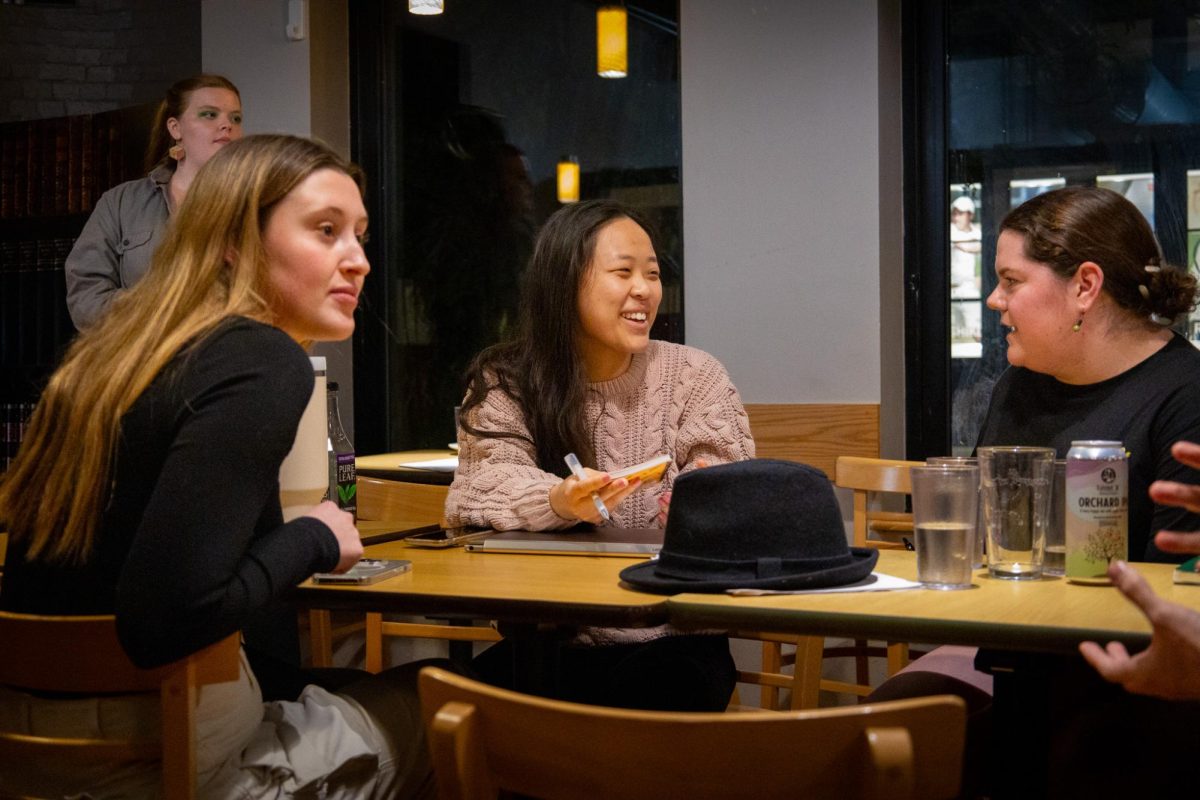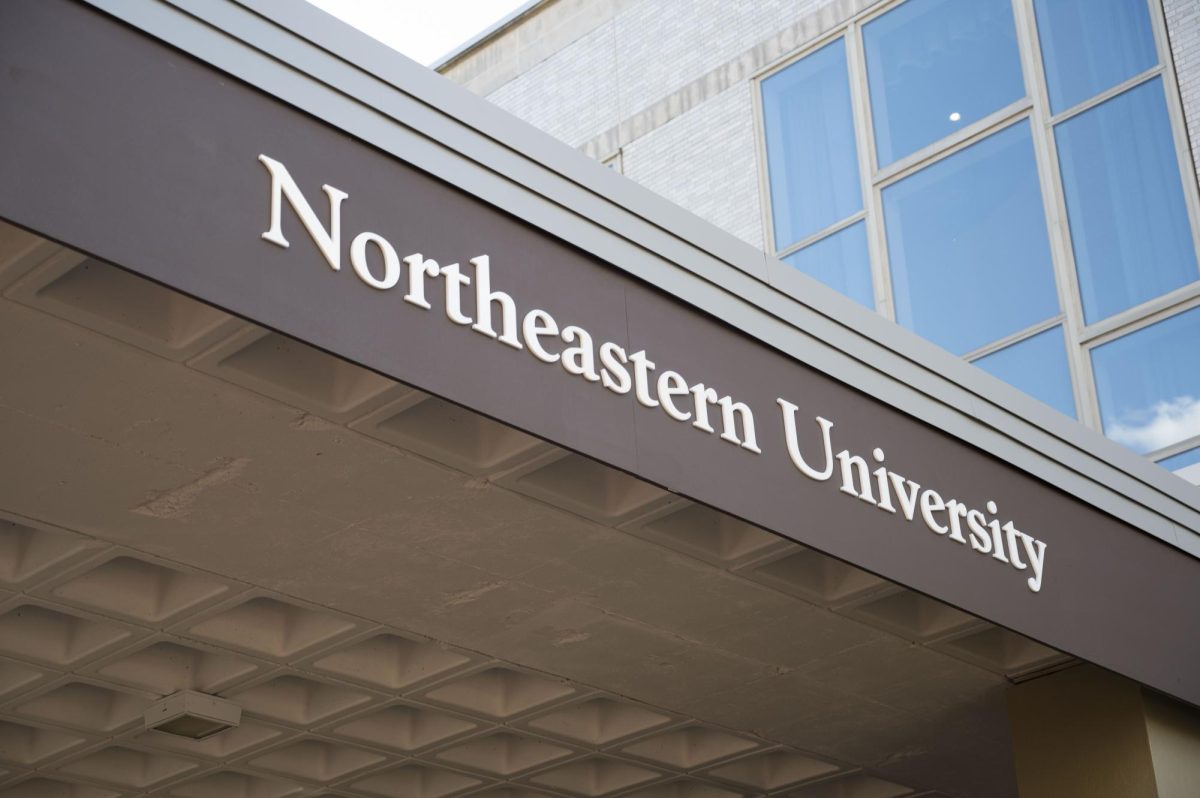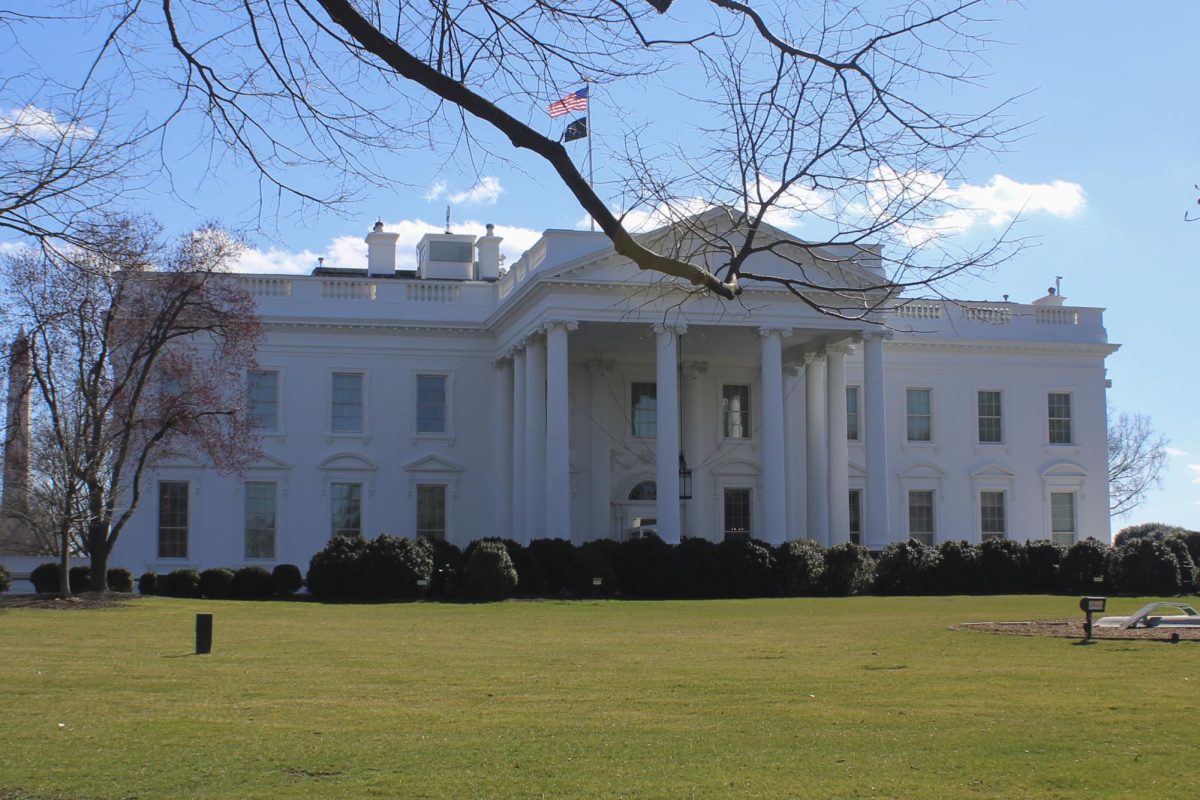By Hailey Heinz
This is the first in a four-part series detailing the background of buildings on Northeastern’s campus.
The most noticeable thing about Ryder Hall is the overpowering smell of Mondo Subs and a close second is the spiral staircase rising from the middle of the lobby.
But the building entrance is also characterized by the somewhat unusual portrait that hangs there. It’s a portrait of Kenneth G. Ryder, former university president, and it is unusual because his wife, Teresa Ryder, wanted it to be different — just like his presidency.
Ryder Hall was dedicated in honor of the former president in 1990. The building, which now houses the majority of art and design classes, was once an old warehouse before being purchased by the university and then renovated in 1983. Before it was dedicated to the emeritus Board of Trustee member and former Chancellor, it was known as the Ruggles building.
“With my whimsical sense of humor, I decided the building needed a portrait that would reflect the personality of the person, rather than the usual portrait in academic robes,” Mrs. Ryder said.
“The portrait you see in Ryder Hall is different in terms of the symbolism it tries to portray,” she said.
The portrait shows her husband surrounded by flowers. One of the hallmarks of his administration was the beginning of the “greening” of the campus.
Ryder is an avid gardener and while he was president the campus began a transformation, re-placing asphalt with lawns, flowers and trees. What Ryder started continues to distinguish Northeastern from urban campuses around the nation.
“Ken Ryder leaves a huge legacy of achievement at Northeast-ern,” said President Richard Freeland. “[One of Ryder’s] most important achievements was … starting the landscaping of grass and trees where there was once parking lots. The entire university community is greatly in his debt.”
The portrait also shows a streetcar going out of the picture. This symbolizes Northeastern’s transition from a commuter school to a more residential campus with a sense of community.
Ryder, now 80, was not only able to change the look of the campus, but the feel of it as well. He was a history professor from 1949 to 1957, before he began moving up the administrative ladder.
This working relationship with the faculty gave him a more informal style.
“He was an accessible president, and I think he did a great deal to humanize a big school. He had that talent,” said Raymond Robinson, a history professor at Northeastern since the Ryder administration.
Ryder was not only popular with the faculty, but with students as well, Robinson said. During his years as a professor he was always coming up with new and different ways to teach the same subject.
“I think my firmest memory of him is that each morning he would rush into the office with some interesting way of developing something that he probably had been teaching for years,” Robinson said. “He was a very peppy individual; students absolutely loved him.”
The community feel was also greatly influenced by his wife, who embraced the role of “first lady” with unprecedented energy. Because of her contributions, Ryder Hall is dedicated to both the former president and his wife.
“She was a wonderful hostess, and had just a terrific personality,” Robinson said. “She was a presence on campus.”
Mrs. Ryder immigrated to the United States in 1965, and is unabashedly Irish in all respects.
“I’m very gregarious and very Irish,” she said, her Dublin accent still apparent after nearly 40 years.
Her outgoing nature helped unite the university and move toward a feeling of more community.
“She was part of the glue that held the administration together,” Robinson said.
She explained that when it was largely a commuter school, the faculty usually did not hang around after hours.
“I think there was a lot of social isolation,” she said. “And I did my Dublin best to change the situation.”
The result was a year-long series of soirees, held every other Sunday at the Henderson House. The Henderson House is a mansion the university used for continuing education programs and for five years, the Ryders lived in part of it.
“Since it was largely vacated on the weekends, I thought it would be a good idea to interact with people socially,” Mrs. Ryder said.
These gatherings included staff members of all positions, creating opportunities for mingling and building a greater sense of community.
“They came and they liked it,” Mrs. Ryder said. “It made it a more social place.” That social atmosphere defined the Ryder administration and in turn, Ryder himself.
Bill Kirtz, a Northeastern journalism professor who also taught during the Ryder years, said the former president’s informal manner is what set him apart. Kirtz explained that when Ryder became president after years of working together, he asked what he should call him now that he was the president.
“He said, ‘Call me Ken.'”








